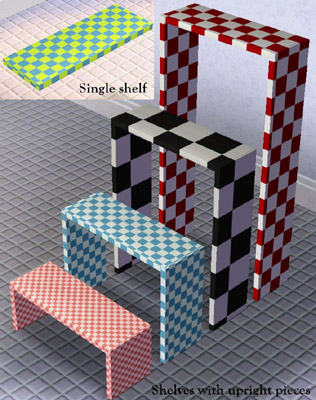Difference between revisions of "MTS2:Creator Guidelines/Sims 3 Objects/Sandbox2"
| Line 65: | Line 65: | ||
[[Image:RightArrow.gif]] For more information on creating proper shadows, see: [[Tutorials:TS3_Meshing_FAQ#Shadows|TS3 Meshing FAQ: Shadows]] | [[Image:RightArrow.gif]] For more information on creating proper shadows, see: [[Tutorials:TS3_Meshing_FAQ#Shadows|TS3 Meshing FAQ: Shadows]] | ||
|} | |} | ||
| + | |||
{| class="collapsible wikitable" style="width:100%" | {| class="collapsible wikitable" style="width:100%" | ||
|- | |- | ||
| Line 79: | Line 80: | ||
! style="text-align:left;background-color:#D0E4E5;font-size:120%;font-weight:bold;border:1px solid #a3bfb1;text-align:left;color:#000;padding:0.2em 0.4em;"| Good material options/CAStability (*) | ! style="text-align:left;background-color:#D0E4E5;font-size:120%;font-weight:bold;border:1px solid #a3bfb1;text-align:left;color:#000;padding:0.2em 0.4em;"| Good material options/CAStability (*) | ||
|- | |- | ||
| − | Most objects have more than one part to them. In TS3, you can colour different parts separately in Create-a-Style (CASt). Remeshes of original TS3 items must have at least the same number of recolourable parts as the originals unless you have a very good reason to reduce the number of channels. This gives you some creative leeway! An example would be a remesh which is a simpler version of an EA item that might work just fine with fewer channels. | + | |Most objects have more than one part to them. In TS3, you can colour different parts separately in Create-a-Style (CASt). Remeshes of original TS3 items must have at least the same number of recolourable parts as the originals unless you have a very good reason to reduce the number of channels. This gives you some creative leeway! An example would be a remesh which is a simpler version of an EA item that might work just fine with fewer channels. |
Bear in mind that "fixed" textures (that is textures which are not castable) should be offered as an 'additional option', and not as the only option. CAStable items are one of the main features of TS3. | Bear in mind that "fixed" textures (that is textures which are not castable) should be offered as an 'additional option', and not as the only option. CAStable items are one of the main features of TS3. | ||
Revision as of 14:11, 21 October 2013
Contents |
Guidelines for Sims 3 Objects
Objects are some of the most popular items to make for the Sims game and can be defined as new objects or recolors.
- Object Mesh:You have created or edited the 3D shape in a 3D editor such as Milkshape or Blender.
- Object Recolor: You have changed the overlay or other parts of an object's texture files - with or without editing the mesh.
- CAST Recolor: Recolours of existing objects, done in-game using the Create-a-Style tool to change the colours/patterns applied. We do not accept CAST recolours at MTS.
Creating your object
Meshes - reasonable poly counts |
|---|
|
If you have created a new mesh it needs to have a polygon count which is reasonable for what it is. A curvy, complex item that would be used rarely can have a higher count than a blocky/boxy item that would be used frequently. Look at EA/Maxis items similar to the type you're making to get a good idea of what a reasonable poly count is for the game. Items with excessively high poly counts for no good reason will not be accepted at MTS.
|
Textures | ||||||||||
|---|---|---|---|---|---|---|---|---|---|---|
|
Meshing is fun and absorbing, but a good mesh needs a good texture to look good in game, especially if you are trying to keep polygon counts low. You need to make sure that your textures are crisp and clear. There shouldn't be any blurriness or pixellation to your textures. They should look as clear and crisp as textures from the game (or better!). If you're using an image for texturing (photoskinning or otherwise), make sure you're not scaling up your image - if it's a logo or design, you should have to shrink it to fit on your texture, not make it bigger.
|
